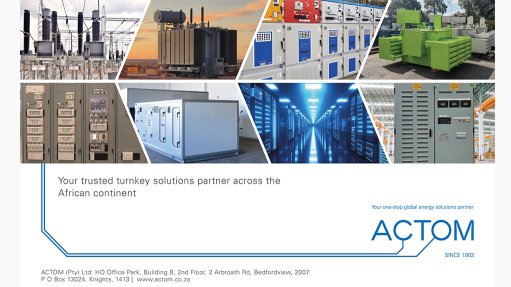NDT testing integral to safety foundation
The Southern African Institute of Welding (SAIW) is Africa’s leading welder training organisation and also hosts the leading nondestructive testing (NDT) facility in Africa.
The importance of NDT to the safety of structures must never be underestimated, SAIW systems and quality manager Harold Jansen tells Engineering News. “This is an area of engineering and industry that we must never take for granted. Safety and the protection of human life are the engineer’s number one priority and NDT is at the heart of such a priority.”
Jansen recommends that all companies in the NDT industry ensure that their competence levels are continuously tried and tested to ensure they are able to deliver the type of service the citizens of this country deserve.
The foundation of NDT, according to Jansen, is visual testing, or the visual observation of material or components, big or small, throughout its ‘engineering life span’. Other SAIW courses in sophisticated NDT technologies include magnetic particle testing, eddy current testing, radiographic testing and ultrasonic testing.
“Visual testing is an essential tool in assessing any engineering product, and should never be underestimated in terms of its efficacy as an NDT process,” Jansen points out. He explains that the three basic visual techniques in visual NDT testing are direct, indirect and translucent.
Direct visual testing involves the direct observation of an accessible inspection surface, with the eye within 600 mm of the area of observation. The incident angle between the eye and the inspection surface should not exceed 60º, as the method would then be regarded as a profile assessment, rather than a surface inspection. Mirrors can be used to modify the angle of vision, or to illuminate the inspection surface. Magnifying glasses not exceeding 10× magnification may also be used to assist in the testing process.
Indirect or remote visual testing relies on the use of equipment such as borescopes, fibrescopes, video probes or cameras, manipulated through mechanical means such as remotely operated robots or drones, to make a hard-to-reach surface visually observable. The image resolution, also known as image detail, must be comparable, incorporating aspects such as digital pixel size, colour and image sensors.
Translucent visual testing can only be performed if light can be transmitted through the material. This technique is seldom used in general engineering, as most engineering materials are opaque.
Jansen says that visual testing observes possible discontinuities that could influence the component’s operability and visual inspection involves looking at the component as a whole. “Engineering components have to undergo both visual testing and visual inspection.”
Article Enquiry
Email Article
Save Article
Feedback
To advertise email advertising@creamermedia.co.za or click here
Comments
Announcements
What's On
Subscribe to improve your user experience...
Option 1 (equivalent of R125 a month):
Receive a weekly copy of Creamer Media's Engineering News & Mining Weekly magazine
(print copy for those in South Africa and e-magazine for those outside of South Africa)
Receive daily email newsletters
Access to full search results
Access archive of magazine back copies
Access to Projects in Progress
Access to ONE Research Report of your choice in PDF format
Option 2 (equivalent of R375 a month):
All benefits from Option 1
PLUS
Access to Creamer Media's Research Channel Africa for ALL Research Reports, in PDF format, on various industrial and mining sectors
including Electricity; Water; Energy Transition; Hydrogen; Roads, Rail and Ports; Coal; Gold; Platinum; Battery Metals; etc.
Already a subscriber?
Forgotten your password?
Receive weekly copy of Creamer Media's Engineering News & Mining Weekly magazine (print copy for those in South Africa and e-magazine for those outside of South Africa)
➕
Recieve daily email newsletters
➕
Access to full search results
➕
Access archive of magazine back copies
➕
Access to Projects in Progress
➕
Access to ONE Research Report of your choice in PDF format
RESEARCH CHANNEL AFRICA
R4500 (equivalent of R375 a month)
SUBSCRIBEAll benefits from Option 1
➕
Access to Creamer Media's Research Channel Africa for ALL Research Reports on various industrial and mining sectors, in PDF format, including on:
Electricity
➕
Water
➕
Energy Transition
➕
Hydrogen
➕
Roads, Rail and Ports
➕
Coal
➕
Gold
➕
Platinum
➕
Battery Metals
➕
etc.
Receive all benefits from Option 1 or Option 2 delivered to numerous people at your company
➕
Multiple User names and Passwords for simultaneous log-ins
➕
Intranet integration access to all in your organisation














